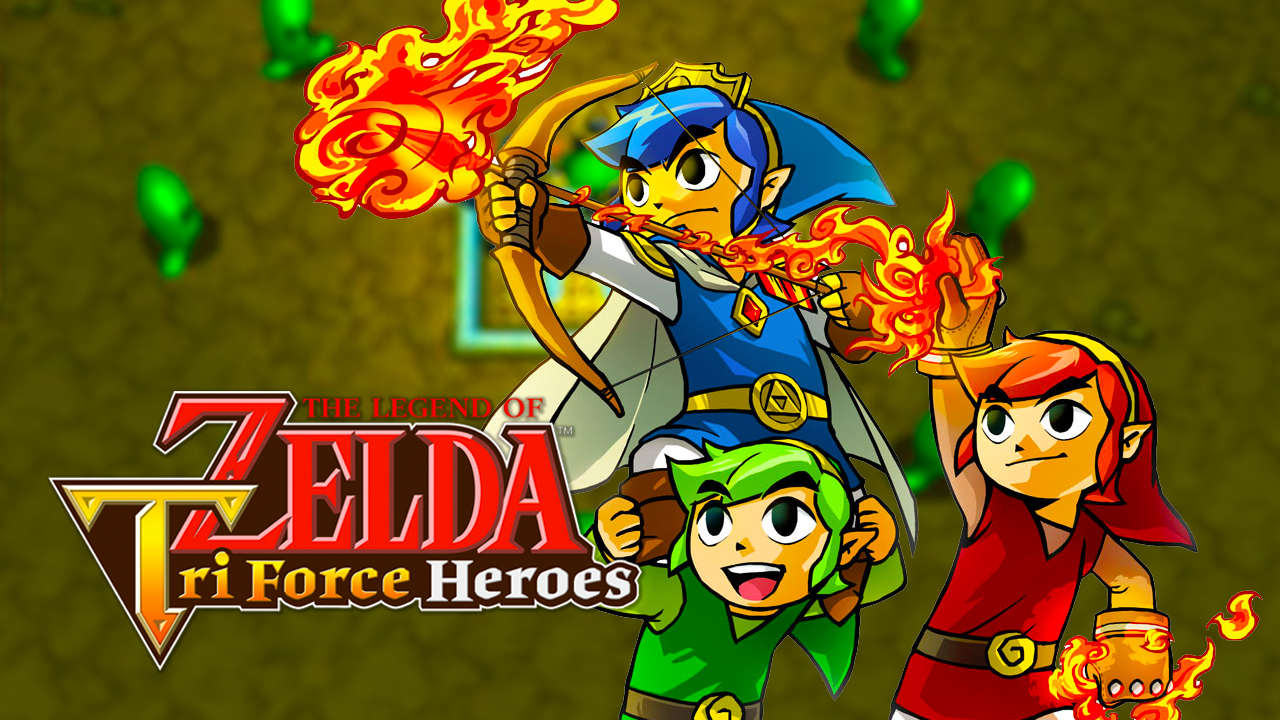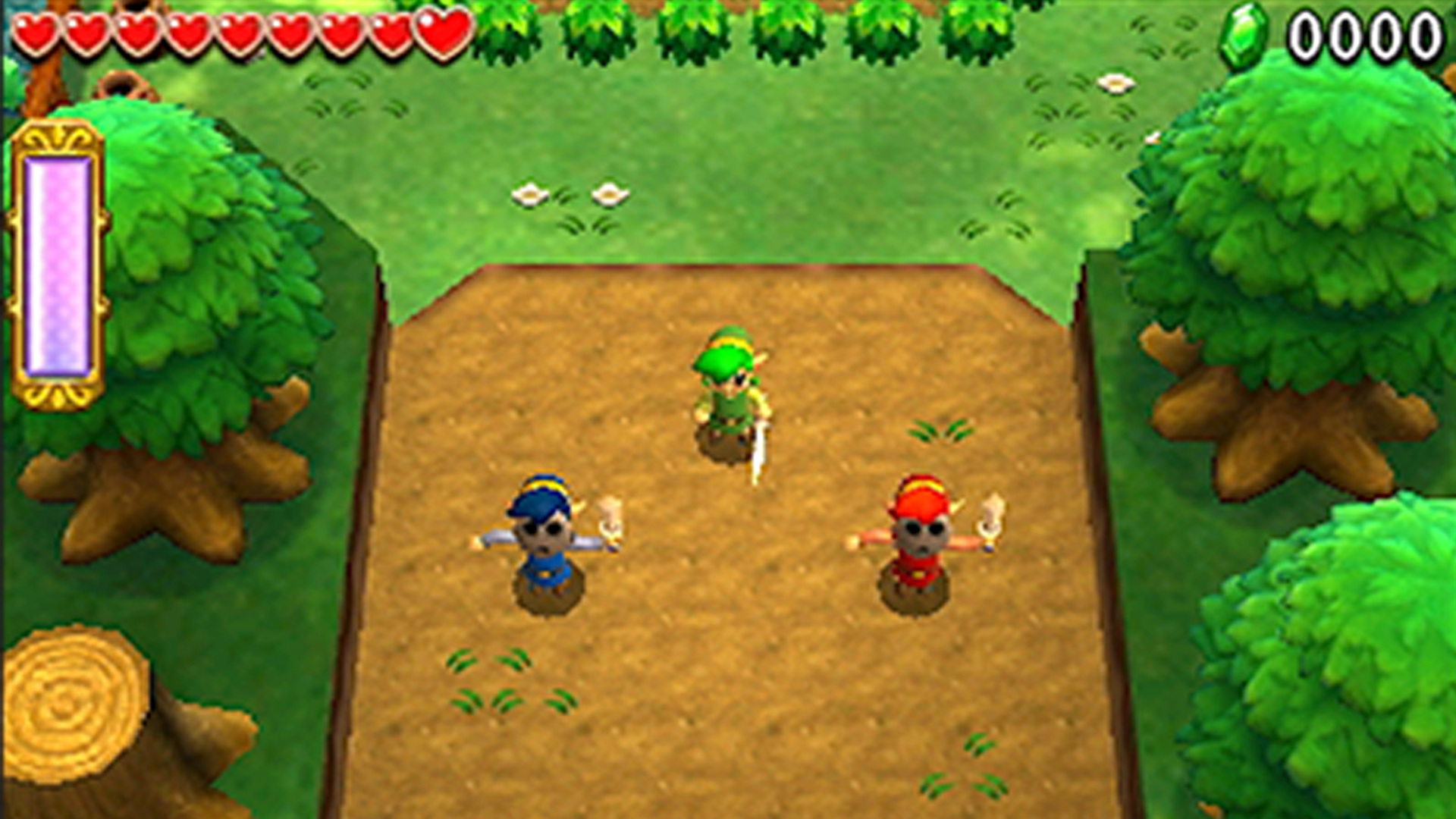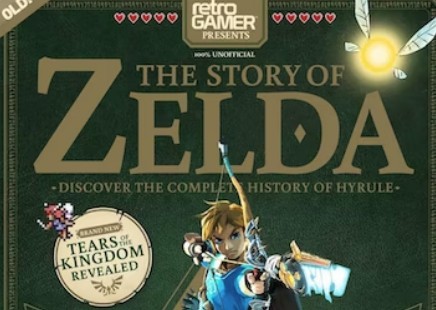The Legend of Zelda: Tri Force Heroes is the weirdest, most wonderful tribute to Four Swords
The multiplayer effort that's underpinned by Four Swords and Spirit Tracks is off the wall in the all the right ways

It's not often you can say this about a Zelda game, but Tri Force Heroes is a good old‑fashioned romp. Here is a series kicking back, letting its hair down, taking a break from the deadly serious business of saving the world and throwing a costume party. Yes, there are forces of evil to fight. And yes, there is a princess to rescue. But in this case, she needs saving from a fashion fate worse than death, as a witch curses her to wear a dull brown unitard in a style-obsessed kingdom. Link's job, then, is to venture into the aptly-named Drablands to obtain a brand-new outfit. The story setup says much for the overall tone: this is a more light-hearted adventure than most Zelda titles, with a rich vein of comedy running through the entire story.
Despite being a follow-up to A Link Between Worlds in terms of story and real-life chronology, the inspiration for Tri Force Heroes actually came from an earlier title. "I was the lead game designer on The Legend Of Zelda: Spirit Tracks, and within that game, we had the phantom-Link element where you switched back and forth between controlling the phantom and Link, and I was always interested in that type of gameplay, but not with a person switching between two, but with two people," director Hiromasa Shikata told Game Informer in 2014.
Best laid plans


While working on A Link Between Worlds, Shikata revived that idea and optioned a 3DS follow-up to Four Swords to Nintendo. That plan was reworked and the game was reimagined as a standalone affair that championed three characters instead of four. "We played around with the idea of four players, but to be honest, it just seemed too high," Shikata admitted to Game Informer in the same interview. "It was a little difficult to see and it just didn't quite get what we were going at, so we reduced it down to three." Another plan that was revised was to restrict the game to multiplayer only. The leadership at Nintendo pushed back, though. Long-time Zelda producer Eiji Aonuma pressed the importance of including a single-player mode, highlighting that solo players shouldn't be left out of the adventure. Shikata later revealed that not including a single-player component would have been disastrous.
The game itself is a fascinating outlier rather than a classic, a cooperative adventure designed to unite a trio of heroes to conquer a series of dungeons, fighting alongside or even on top of one another, as they formed totems to reach higher ground or to stand tall against bosses. Each bite-sized mission requires three Links, which rules out a two-player mode, though solo adventurers can bring two doppelgängers with them, switching control between the three to solve puzzles and aggro enemies. Alone, you are never quite given enough to think about, the awkwardness of manoeuvring three characters separately causing more headaches than any of the puzzles. Ostensibly adding two others to the mix should only have made things easier, but successfully coordinating a plan was never quite that straightforward – proving the old maxim about threes and crowds.
Still, with local partners, ensuring everyone is on the same page eventually makes things easier. It is when you take Tri Force Heroes online that it springs to life. Nintendo at the time was often bemoaned for its tendency to leave out voice chat in online games, but here its absence is the making of the game. Instead, it limits communication options to a set of cute pictorial icons, which you tap whenever you need your partners to follow you, throw a bomb, or give you a piggyback to reach a treasure chest. Until Tri Force Heroes, few games had ever quite managed to capture the exquisite frustration of trying to communicate effectively without the tools to do so.
The confusion that often results is usually entertaining and frequently hilarious – particularly with room to play pranks on impatient players by deliberately misinterpreting their desperate attempts to direct you. Players might be empowered by forming a totem, but Tri Force Heroes never stacks up to the sublime Four Swords Adventures on the GameCube. Its dungeons are compromised by having to simultaneously cater to lone players and groups while forcing players to share a single life bar neutering the playful competitive element that enlivened the GameCube favourite. Still, if four swords ultimately proved better than three, Tri Force Heroes' infectiously breezy, fashion-forward pleasures often prove difficult to resist.
Keep up to speed with all of our celebratory Zelda coverage with our The Legend of Zelda celebration hub
Weekly digests, tales from the communities you love, and more

Chris is Edge's former deputy editor, having previously spent a decade as a freelance critic. With more than 15 years' experience in print and online journalism, he has contributed features, interviews, reviews and more to the likes of PC Gamer, GamesRadar and The Guardian. He is Total Film’s resident game critic, and has a keen interest in cinema. Three (relatively) recent favourites: Hyper Light Drifter, Tetris Effect, Return Of The Obra Dinn.


